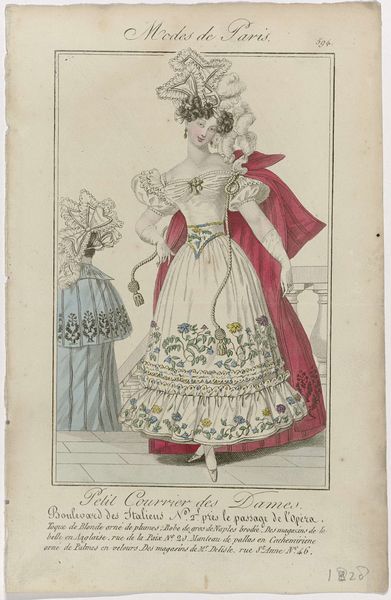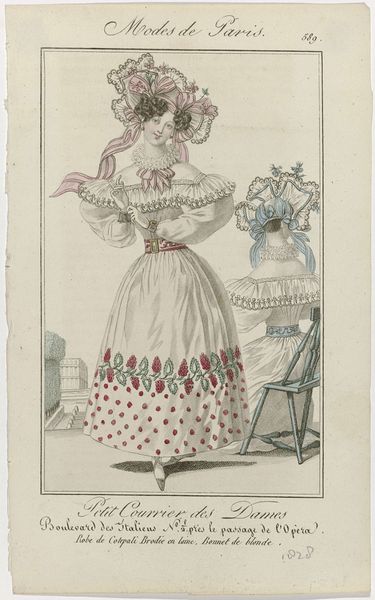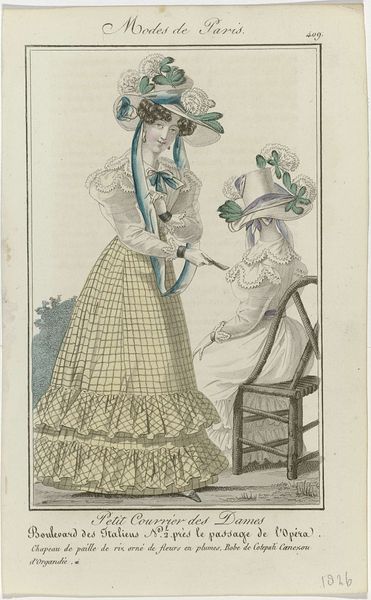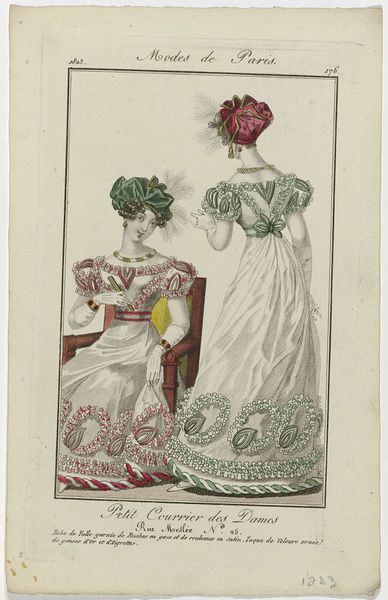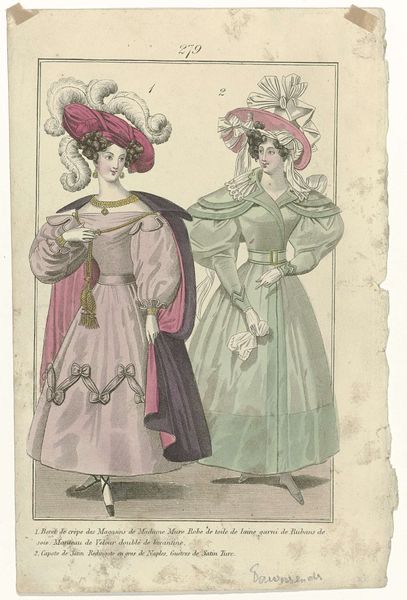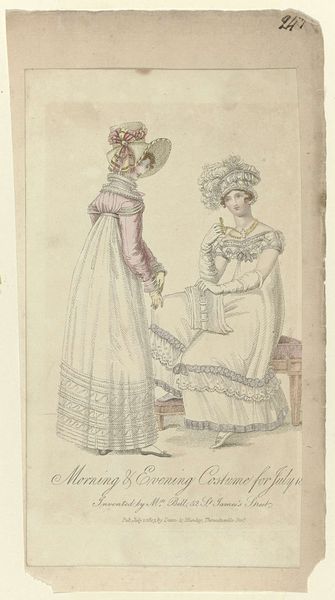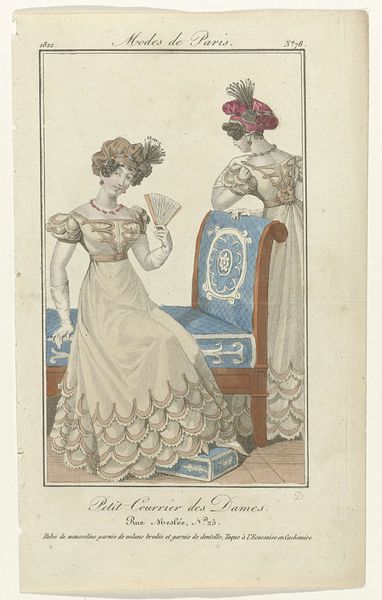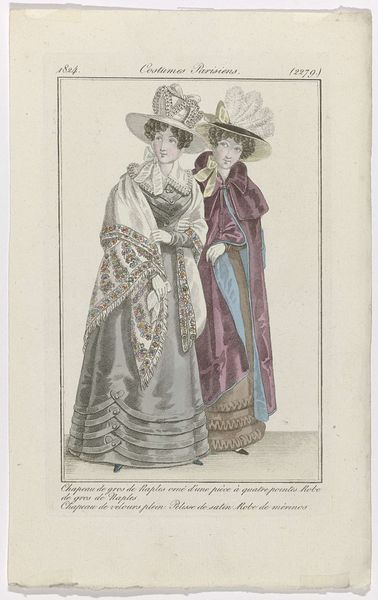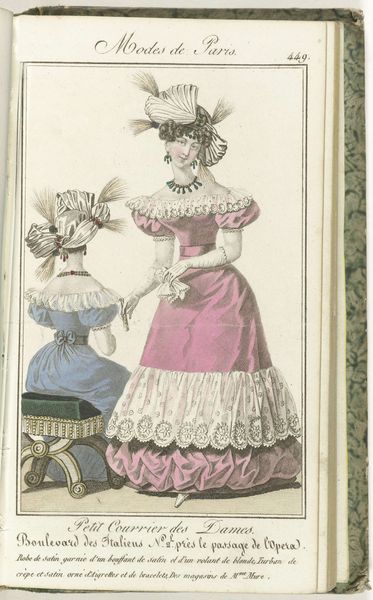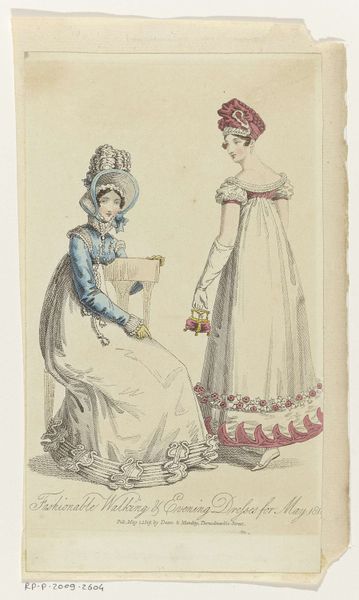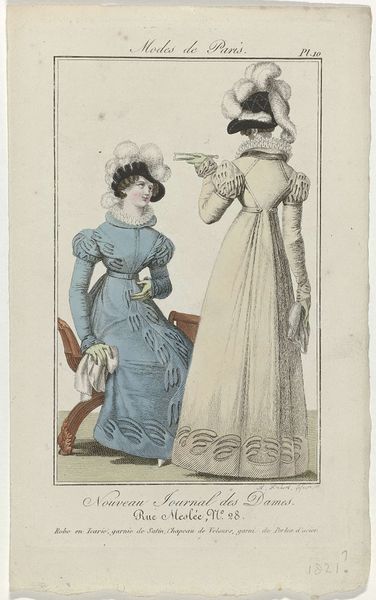
Journal des Dames et des Modes, Costume Parisien, 5 août 1824, (2254): Bonnet de mousselin (...) 1824
0:00
0:00
print, etching
#
portrait
# print
#
etching
#
romanticism
#
watercolour illustration
#
genre-painting
#
dress
Dimensions: height 176 mm, width 109 mm
Copyright: Rijks Museum: Open Domain
Curator: Here we have "Journal des Dames et des Modes, Costume Parisien, 5 août 1824," a print by August Delvaux, dating back to 1824. The artwork details two women in elaborate dresses. Editor: My immediate reaction is that the image is a sweet encapsulation of the fashion mores of its time, yet beneath its delicate rendering, one senses a certain pressure women may have faced to meet appearance ideals. Curator: Let's delve into that sweetness. Consider the delicate lines, the soft watercolor washes, and the almost mathematical precision in the pleating of the dresses. Note how each fold, each curve, serves to create a harmonious composition. It showcases the structure of fashion as an art form in itself. Editor: Indeed, the rendering is exquisite. But what does it communicate about gendered expectations and societal constraints? Consider the overt focus on the garment and headdress of each woman. Do the fashion demands obscure women's complex identity within this cultural period? Curator: One could argue that focusing solely on garments misses Delvaux's mastery. The etching and delicate application of colors work together beautifully to capture the softness of the fabrics. It is an accomplishment in depicting texture and form. Editor: True, but how does that relate to its era? Women’s fashion became more restrictive during the late Romantic and early Victorian period. Understanding these dynamics can open up deeper analysis of visual culture, illustrating class, labor, and perhaps rebellion of gender. What kind of freedoms were they expressing through what they wore? Curator: While it may present societal conventions of 1824 Paris, focusing on the execution reveals how form is a reflection of cultural attitude; fashion choices indicate cultural expression of the feminine form and a movement into popular culture. Editor: It is impossible to overlook the sociopolitical circumstances surrounding fashion; it's intertwined within personal identity and resistance. Through Delvaux’s artwork, fashion history is opened for continued exploration in both a contemporary and historical context. Curator: Ultimately, this piece exemplifies the artist's profound technical prowess with Romanticism's capacity to emphasize detail. Editor: Precisely, recognizing this cultural artifact offers glimpses into women’s visual self-expression and autonomy.
Comments
No comments
Be the first to comment and join the conversation on the ultimate creative platform.

